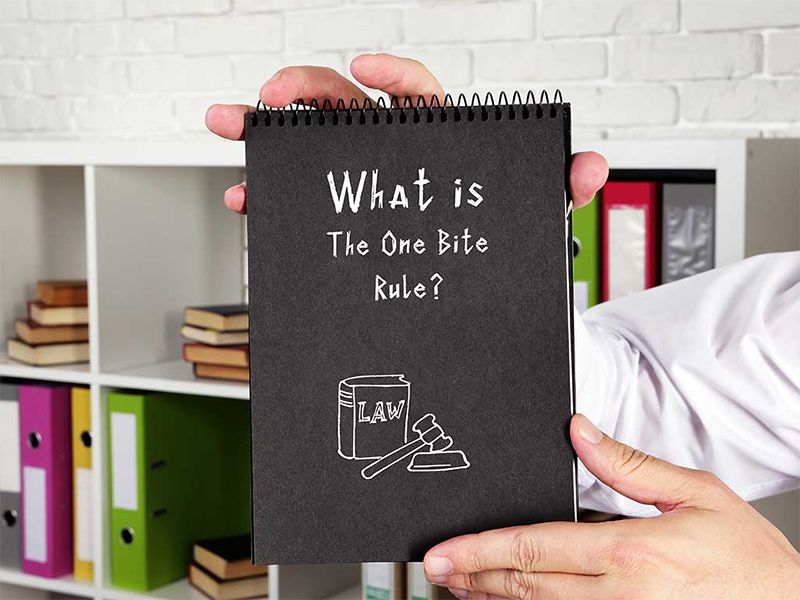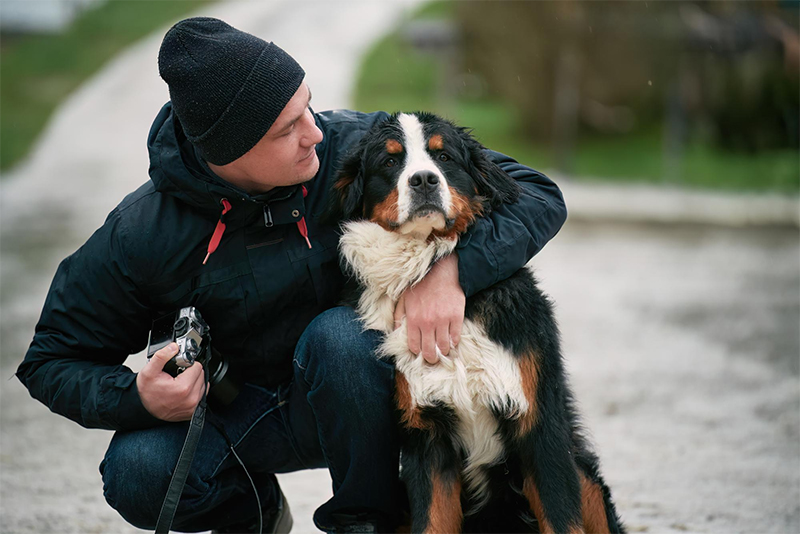What is the One-Bite Rule?
The One-Bite Rule, is a legal principle followed in some states to determine liability in dog bite cases. Under this rule, a dog owner is typically not held liable for the first bite or attack by their dog, unless they had prior knowledge or reason to believe that their dog was dangerous or had aggressive tendencies.
The rationale behind the One-Bite Rule is that dog owners should not be held responsible for their dog’s actions if they had no knowledge or warning that their pet posed a threat to others. This rule places the burden of proof on the victim to show that the owner had prior knowledge of their dog’s dangerous behavior.
More than 4.5 million people in the United States suffer dog bites yearly. Sadly, more than 800,000 must seek medical attention. [1]

Strict Liability and Dog Bite Injuries
In the realm of dog bite law, strict liability is a legal principle that holds dog owners responsible for any injuries caused by their pets, regardless of whether or not the dog had previously demonstrated aggressive behavior.
Unlike the One-Bite Rule, which requires proof of prior knowledge or warning of a dog’s dangerous propensities, strict liability places the burden of responsibility squarely on the shoulders of the owner.
Under strict liability laws, if a dog bites or injures someone, the owner is automatically liable for the harm caused by their pet.
In contrast to the One-bite Rule, the victim does not need to prove that the owner was negligent or had prior knowledge of the dog’s aggressive tendencies. Rather, the focus is on the actual act of the dog bite and the resulting injury.
Strict liability rules aim to provide greater protection for bite victims by ensuring that they can seek compensation for their injuries without the need to establish the owner’s knowledge or negligence. This can be particularly beneficial in cases where the dog’s aggressive tendencies were not previously known or documented.
Which States Use the One-Bite Law?
Sixteen states currently have the one-bite rule:
- Alaska
- Arkansas
- Idaho
- Kansas
- Maryland
- Mississippi
- Nevada
- New Mexico
- New York
- North Dakota
- Oregon
- South Dakota
- Texas
- Vermont
- Virginia
- Wyoming
Due to the numerous variations in these laws, it is important to familiarize oneself with the specific regulations in one’s state.

When an Owner Should Know Their Dog is Dangerous
Aggression can manifest in various ways, such as growling, barking excessively, snapping, biting, or showing signs of territorial protection. These warning signs should never be ignored or dismissed as mere quirks of their dog’s personality.
If a dog has previously bitten someone or exhibited aggressive behavior, the owner must take immediate action. This includes informing others who may come into contact with the dog about its history of aggression. Failure to warn others can result in severe consequences for both the owner and potential victims.
It is also important for owners to be aware of their dog’s responses to different situations and stimuli. Some dogs may become anxious or aggressive in crowded places, around children, or when faced with unfamiliar circumstances. Recognizing these triggers can help prevent potentially harmful situations and allow owners to take appropriate measures to ensure safety.
One-Bite Rule and Postal Workers
The One-Bite Rule has significant implications, particularly in cases involving postal workers who are frequently exposed to the risk of being bitten by dogs during their delivery routes.
In these situations, if a postal worker is bitten by a dog that has not previously displayed dangerous tendencies, the owner may not be held legally responsible for the incident under the One-Bite Rule.
However, a previous incident or documented knowledge of the dog’s dangerous tendencies can potentially make the owner liable for any bite injury claims made by the postal worker.

What to do After a Dog Bite
Seek immediate medical attention:
One’s health should always be a top priority. Regardless of the perceived severity of a dog bite, seek appropriate medical attention to ensure proper cleaning, disinfection, and evaluation by a healthcare professional.
Dog bites have the potential to result in severe infections, nerve damage, and permanent scarring, making timely and thorough medical care indispensable.

Identify the owner and the dog:
In the event of a dog bite, attempt to identify the owner responsible for the incident. Gather their contact information, including their name, address, phone number, and any other pertinent details. Take note of the dog’s breed, size, and any distinctive physical features that can be helpful for future reference or if further action is necessary.

Document the incident:
If the person’s condition permits, it is advisable to document the specifics of the dog bite incident promptly. They should make a detailed written account of how the attack transpired, noting the incident’s date, time, and location. It is also recommended to take photographs of the injuries sustained, including any torn or bloodied clothing.
Visual evidence can play a role in bolstering their case by clearly demonstrating the extent of the injuries suffered. By documenting these factors, individuals can have a thorough record of the incident, which can be beneficial in pursuing legal or medical recourse effectively.
Gather witness information:
If there were any witnesses to the dog bite, try to obtain their names and contact information. Eyewitness testimonies can provide valuable support when pursuing legal action or filing an insurance claim.
Report the incident:
Contact the local animal control or law enforcement agency to report the dog bite. Providing them with accurate information can help prevent future incidents involving the same animal and establish a record of the incident.

Preserve evidence:
Keep any evidence related to the dog bite, such as medical records, photographs, witness statements, and communications with the dog’s owner or insurance company.
Consult with a personal injury attorney:
After a dog bite, it is wise to consult with an experienced personal injury attorney who specializes in animal attack cases. They can assess the circumstances of your case, provide legal advice, and guide you through the process of seeking compensation for your injuries and other damages.

If you or someone you know has been bitten by a dog, take the first step toward justice by contacting Goldberg & Loren for a consultation today.
One Bite Rule Infographic
Source:
[1] J.D., C. B. (2023, February 16). Dog Bite Law By State (2023 Guide). Forbes Advisor. https://www.forbes.com/advisor/legal/personal-injury/dog-bite-law/


